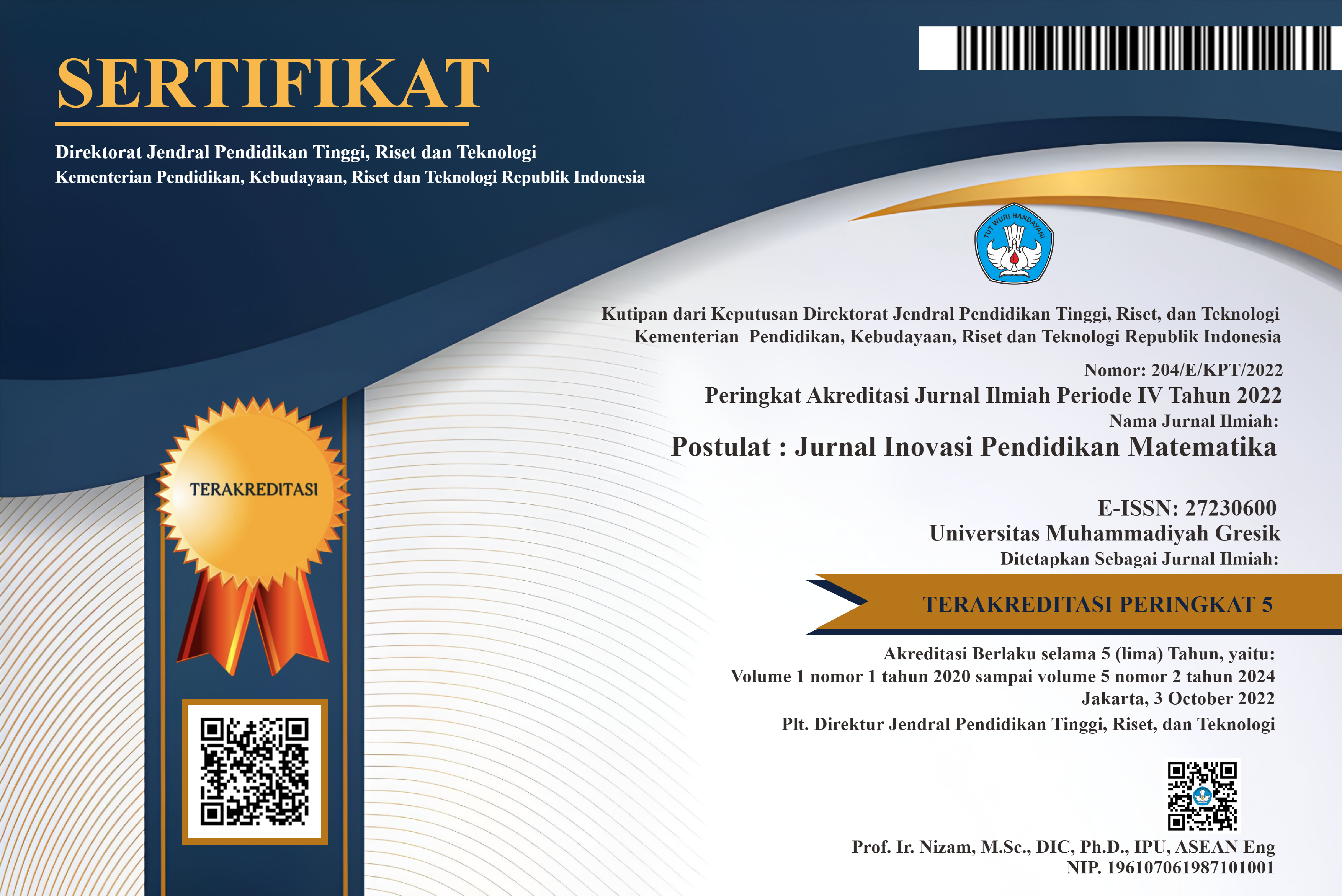Penerapan Pendekatan STEAM untuk Meningkatkan Kemampuan Pemecahan Masalah Matematika Siswa Kelas VIII D SMPN 23 Balikpapan
DOI:
https://doi.org/10.30587/postulat.v5i1.2656Keywords:
problem solving skills, steam approachAbstract
Minimum math problem-solving skill was discovered among 8th-grade students of class D SMPN 23 Balikpapan based on their Mid-Term Exam and daily quizzes results.This research aims to improve their mathematical problem-solving skills by applying the STEAM approach. To test the hypothesis that applying the aforementioned approach results in improving math problem-solving skills, test of problem-solving skills, observation sheets and student response questionnaires were employed through classroom action research consisiting of planning, action, observation and reflection. The test result suggests that the percentage of math problem solving skills of the students increased by 33% in cycle 1 to 50% in cycle 2 and 78% in cycle 3. The observation and student response questionnaires results both indicate satisfying remarks. On this basis, applying the STEAM approach should be taken into account when improving the mathematics problem solving skills for 8th-grade students of class D in SMPN 23 Balikpapan.
References
Arifin, Zainal. 2012. Evaluasi Pembelajaran. Bandung: PT. Remaja Rosdakarya Offset.
BSNP. 2006. Permendiknas RI No. 22 Tahun 2006 tentang Standar Isi untuk Satuan Pendidikan Dasar dan Menengah. Jakarta.
Buinicontro, J. K. (2018). Gathering STE(A)M: Policy, Curricular, And Programmatic Developments In Arts-Based Science, Technology, Engeneering, And Mathematics Education Introduction To Special Issue Of Art Education Policy Review: STEAM Focus. Art Education Policy Review Journal. Volume 119, 2018 - Issue 2.
Herman Hudojo. (2005). Pengembangan Kurikulum dan Pembelajaran Matematika.Malang: UM Press.
Hopkins. (1993). Desain Penelitian Tindakan Kelas (Model Ebbut). Yogyakarta : Pustaka Belajar.
Jacobsen, David A., Eggen, Paul, and Kauchak, Donald. (2009). Methods for Teaching, Metode-metode Pengajaran Meningkatkan Belajar Siswa TKSMA (Edisi ke-8). Yogyakarta: Pustaka Pelajar.
Kennedy,L.,Tipps,S., & Johnson, A. (2008). Guiding Children’s Learning of Mathematics.USA: Thomson Learning Inc. Riley, S. (2019). Why STEAM Education?
https://www.learnbyart.com/why-steam
Suherman, Erman dkk. 2003. Strategi Pembelajaran Matematika Kontemporer. Bandung: PT Remaja Rosdakarya.












